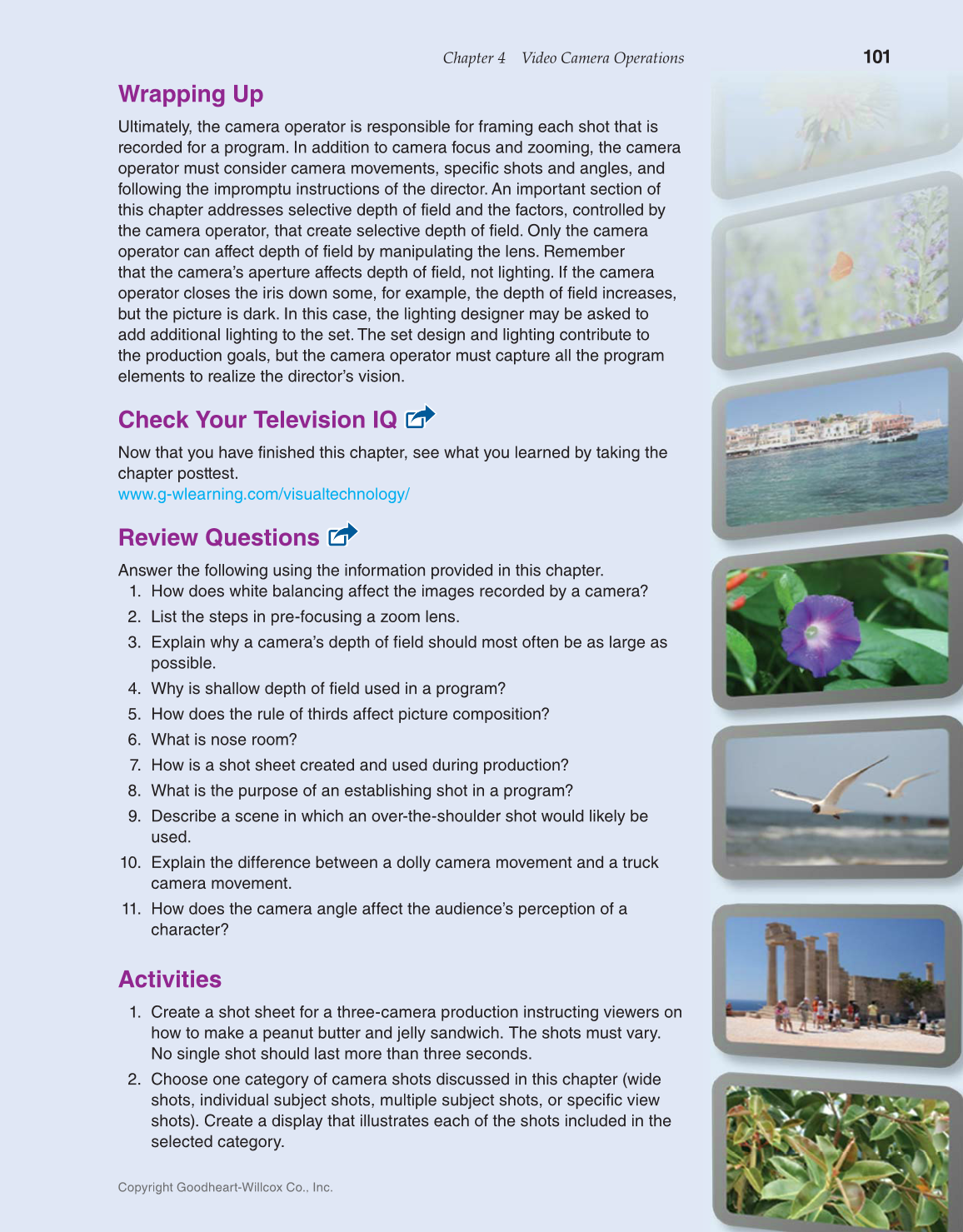Chapter 4 Video Camera Operations
101
Copyright Goodheart-Willcox Co., Inc.
Wrapping Up
Ultimately, the camera operator is responsible for framing each shot that is
recorded for a program. In addition to camera focus and zooming, the camera
operator must consider camera movements, specific shots and angles, and
following the impromptu instructions of the director. An important section of
this chapter addresses selective depth of field and the factors, controlled by
the camera operator, that create selective depth of field. Only the camera
operator can affect depth of field by manipulating the lens. Remember
that the camera’s aperture affects depth of field, not lighting. If the camera
operator closes the iris down some, for example, the depth of field increases,
but the picture is dark. In this case, the lighting designer may be asked to
add additional lighting to the set. The set design and lighting contribute to
the production goals, but the camera operator must capture all the program
elements to realize the director’s vision.
Check Your Television IQ
Now that you have finished this chapter, see what you learned by taking the
chapter posttest.
www.g-wlearning.com/visualtechnology/
Review Questions
Answer the following using the information provided in this chapter.
1. How does white balancing affect the images recorded by a camera?
2. List the steps in pre-focusing a zoom lens.
3. Explain why a camera’s depth of field should most often be as large as
possible.
4. Why is shallow depth of field used in a program?
5. How does the rule of thirds affect picture composition?
6. What is nose room?
7. How is a shot sheet created and used during production?
8. What is the purpose of an establishing shot in a program?
9. Describe a scene in which an over-the-shoulder shot would likely be
used.
10. Explain the difference between a dolly camera movement and a truck
camera movement.
11. How does the camera angle affect the audience’s perception of a
character?
Activities
1. Create a shot sheet for a three-camera production instructing viewers on
how to make a peanut butter and jelly sandwich. The shots must vary.
No single shot should last more than three seconds.
2. Choose one category of camera shots discussed in this chapter (wide
shots, individual subject shots, multiple subject shots, or specific view
shots). Create a display that illustrates each of the shots included in the
selected category.
